原来耐克也做导弹啊~~
来源:百度文库 编辑:超级军网 时间:2024/04/28 04:47:25
Western Electric SAM-A-7/M1/MIM-3 Nike Ajax
The Nike Ajax was the world's first operational surface-to-air guided missile system. Its origins lay in the immediate post-war time, when the U.S. Army realized that guided missiles were the only way to provide air-defense against future fast high-flying bombers. Western Electric became prime contractor for the XSAM-G-7 Nike missile system, and Douglas as primary subcontractor was responsible for the missile airframe.
The first unguided Nike missiles were fired in 1946, but problems with the original multi-rocket booster (8 solid-fuel rockets wrapped around the missile tail) soon led to delays in the program. In 1948 it was decided to replace this booster pack with a single rocket booster, attached to the back of the missile. The main propulsion of the missile was a Bell liquid-fueled rocket motor, and the flight path was controlled by the four small fins around the nose. In November 1951 the first successful interception of a QB-17 target drone succeeded. The first production Nike (which had been redesignated SAM-A-7 in 1951) flew in 1952, and the first operational Nike site was activated in 1954. By this time, the missile had been designated by the Army as Guided Missile, Anti-Aircraft M1. The name had changed to Nike I, to distinguish it from the Nike B (later MIM-14 Nike Hercules) and Nike II (later LIM-49 Nike Zeus). On 15 November 1956, the name was finally changed to Nike Ajax.
The Nike Ajax missile used a command guidance system. An acquisition radar called LOPAR (Low-Power Acquisition Radar) picked up potential targets at long range, and the information on hostile targets was then transferred to the TTR (Target Tracking Radar). An adjacent MTR (Missile Tracking Radar) tracked the flight path of the Nike Ajax missile. Using tracking data of the TTR and MTR, a computer calculated the interception trajectory, and sent appropriate course correction commands to the missile. The three high-explosive fragmentation warheads of the missile (in nose, center, and aft section) were detonated by ground command, when the paths of target and missile met.
One of the major disadvantages of the Nike Ajax system was that the guidance system could handle only one target at a time. Additionally, there was originally no data link between different Nike Ajax sites, which could lead to several sites engaging the same target. The latter problem was eventually solved by the introduction of the Martin AN/FSG-1 Missile Master command-and-control system, with automatic data communication and processing. Other problematic features of the Nike Ajax system were the liquid-fuel rocket motor with its highly toxic propellants, and the large size of a complete site with all components, which made Nike Ajax to all intents and purposes a fixed-site air defense system.
By 1958, nearly 200 Nike Ajax sites had been activated in the USA. However, the far more advanced MIM-14 Nike Hercules soon replaced the Nike Ajax, and by late 1963 the last Nike Ajax on U.S. soil had been retired. In 1963, the Nike Ajax had received the new designation MIM-3A. Despite the use of an MIM (Mobile Intercept Missile) designator, the mobility of the Nike Ajax system was more theoretical than actually feasible in a combat situation.
The MIM-3A continued to serve with U.S. overseas and friendly forces for many more years. In total, more than 16000 missiles were built.
Specifications
Note: Data given by several sources show slight variations. Figures given below may therefore be inaccurate!
Data for MIM-3A:
Length (w/o booster) 6.40 m (21 ft); booster: 4.21 m (13 ft 10 in)
Wingspan 1.37 m (4 ft 6 in)
Diameter 0.30 m (12 in)
Weight (w/o booster) 450 kg (1000 lb); booster: 660 kg (1460 lb)
Speed Mach 2.3
Ceiling 21300 m (70000 ft)
Range 48 km (30 miles)
Propulsion Booster: Allegheny Ballistics Lab. M5 solid-fueled rocket; 246 kN (55000 lb) for 3 sec
Sustainer: Bell liquid-fueled rocket; 11.6 kN (2600 lb)
Warhead Three HE fragmentation warheads: 5.44 kg (12 lb), 81.2 kg (179 lb), 55.3 kg (122 lb)
Western Electric SAM-A-7/M1/MIM-3 Nike Ajax
The Nike Ajax was the world's first operational surface-to-air guided missile system. Its origins lay in the immediate post-war time, when the U.S. Army realized that guided missiles were the only way to provide air-defense against future fast high-flying bombers. Western Electric became prime contractor for the XSAM-G-7 Nike missile system, and Douglas as primary subcontractor was responsible for the missile airframe.
The first unguided Nike missiles were fired in 1946, but problems with the original multi-rocket booster (8 solid-fuel rockets wrapped around the missile tail) soon led to delays in the program. In 1948 it was decided to replace this booster pack with a single rocket booster, attached to the back of the missile. The main propulsion of the missile was a Bell liquid-fueled rocket motor, and the flight path was controlled by the four small fins around the nose. In November 1951 the first successful interception of a QB-17 target drone succeeded. The first production Nike (which had been redesignated SAM-A-7 in 1951) flew in 1952, and the first operational Nike site was activated in 1954. By this time, the missile had been designated by the Army as Guided Missile, Anti-Aircraft M1. The name had changed to Nike I, to distinguish it from the Nike B (later MIM-14 Nike Hercules) and Nike II (later LIM-49 Nike Zeus). On 15 November 1956, the name was finally changed to Nike Ajax.
The Nike Ajax missile used a command guidance system. An acquisition radar called LOPAR (Low-Power Acquisition Radar) picked up potential targets at long range, and the information on hostile targets was then transferred to the TTR (Target Tracking Radar). An adjacent MTR (Missile Tracking Radar) tracked the flight path of the Nike Ajax missile. Using tracking data of the TTR and MTR, a computer calculated the interception trajectory, and sent appropriate course correction commands to the missile. The three high-explosive fragmentation warheads of the missile (in nose, center, and aft section) were detonated by ground command, when the paths of target and missile met.
One of the major disadvantages of the Nike Ajax system was that the guidance system could handle only one target at a time. Additionally, there was originally no data link between different Nike Ajax sites, which could lead to several sites engaging the same target. The latter problem was eventually solved by the introduction of the Martin AN/FSG-1 Missile Master command-and-control system, with automatic data communication and processing. Other problematic features of the Nike Ajax system were the liquid-fuel rocket motor with its highly toxic propellants, and the large size of a complete site with all components, which made Nike Ajax to all intents and purposes a fixed-site air defense system.
By 1958, nearly 200 Nike Ajax sites had been activated in the USA. However, the far more advanced MIM-14 Nike Hercules soon replaced the Nike Ajax, and by late 1963 the last Nike Ajax on U.S. soil had been retired. In 1963, the Nike Ajax had received the new designation MIM-3A. Despite the use of an MIM (Mobile Intercept Missile) designator, the mobility of the Nike Ajax system was more theoretical than actually feasible in a combat situation.
The MIM-3A continued to serve with U.S. overseas and friendly forces for many more years. In total, more than 16000 missiles were built.
Specifications
Note: Data given by several sources show slight variations. Figures given below may therefore be inaccurate!
Data for MIM-3A:
Length (w/o booster) 6.40 m (21 ft); booster: 4.21 m (13 ft 10 in)
Wingspan 1.37 m (4 ft 6 in)
Diameter 0.30 m (12 in)
Weight (w/o booster) 450 kg (1000 lb); booster: 660 kg (1460 lb)
Speed Mach 2.3
Ceiling 21300 m (70000 ft)
Range 48 km (30 miles)
Propulsion Booster: Allegheny Ballistics Lab. M5 solid-fueled rocket; 246 kN (55000 lb) for 3 sec
Sustainer: Bell liquid-fueled rocket; 11.6 kN (2600 lb)
Warhead Three HE fragmentation warheads: 5.44 kg (12 lb), 81.2 kg (179 lb), 55.3 kg (122 lb)
哗众取宠一下 嘿嘿嘿:D ;P
奈基。。。。。。
继续哗众取宠~~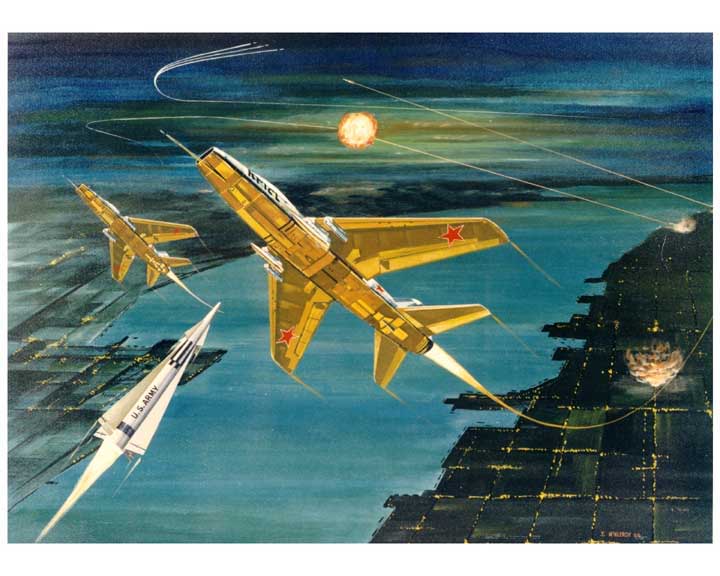


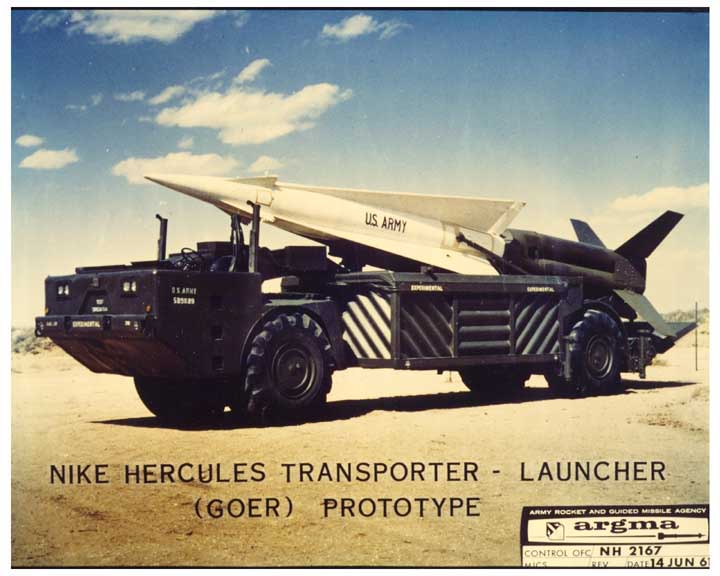
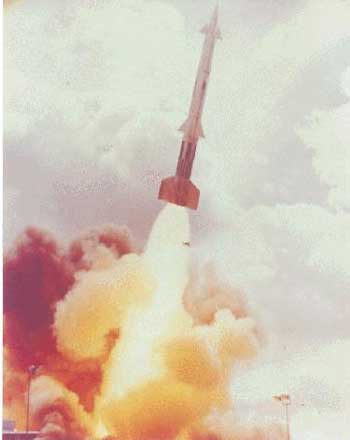
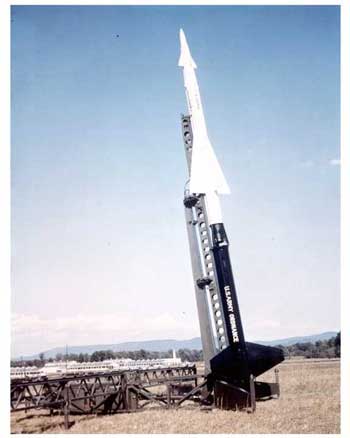








无视楼主的头像,走人
原来阿贾克斯也做地对空导弹啊?
比较欠揍~~继续取宠:D 









US ARMY```;funk 貌似好像发错地了 不管了!~~无视!!!积蓄发~~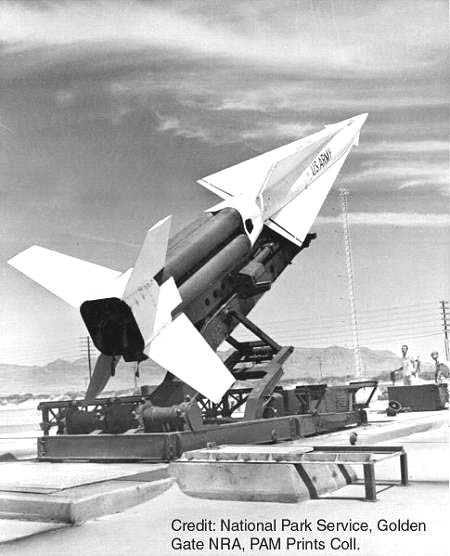
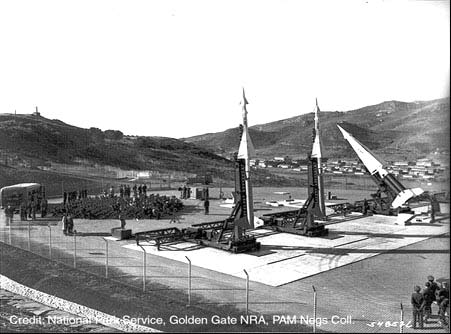










我进来就是为了看头像的~~~
看楼主的签名:
================================
千里求学过玉门
客居西凉犹有恨
人言金城多俊秀
独爱故乡梦里人
================================
要过玉门,走了千里才到到武威,又说兰州如何如何……
莫非是个新疆人到兰州去上学?;P
================================
千里求学过玉门
客居西凉犹有恨
人言金城多俊秀
独爱故乡梦里人
================================
要过玉门,走了千里才到到武威,又说兰州如何如何……
莫非是个新疆人到兰州去上学?;P
商业就是那个挣钱干那个!IBM还出炮弹!就不用说 奔驰 宝马了!
有道理,美帝的军工市场化那是想当地
...
四楼的飞机MS美国的F-100啊,怎么有红五星?难道是火拼王伦,自己人干自己人?
四楼的飞机MS美国的F-100啊,怎么有红五星?难道是火拼王伦,自己人干自己人?
原帖由 小小不言 于 2007-8-9 20:32 发表
...
四楼的飞机MS美国的F-100啊,怎么有红五星?难道是火拼王伦,自己人干自己人?
这个我也见到了 貌似是画师不知苏联飞机长什么样 只好拿F100当替死鬼 假扮米格19了
原帖由 jerrygen 于 2007-8-9 19:06 发表
商业就是那个挣钱干那个!IBM还出炮弹!就不用说 奔驰 宝马了!
成熟化的集团经营嘛
原帖由 sunlibo1986 于 2007-8-9 20:55 发表
这个我也见到了 貌似是画师不知苏联飞机长什么样 只好拿F100当替死鬼 假扮米格19了
大锅、这你都知道
原帖由 jjlearner 于 2007-8-9 21:31 发表
大锅、这你都知道
莫不是怕KGB潜入美军机场 盗取F100?~~~
